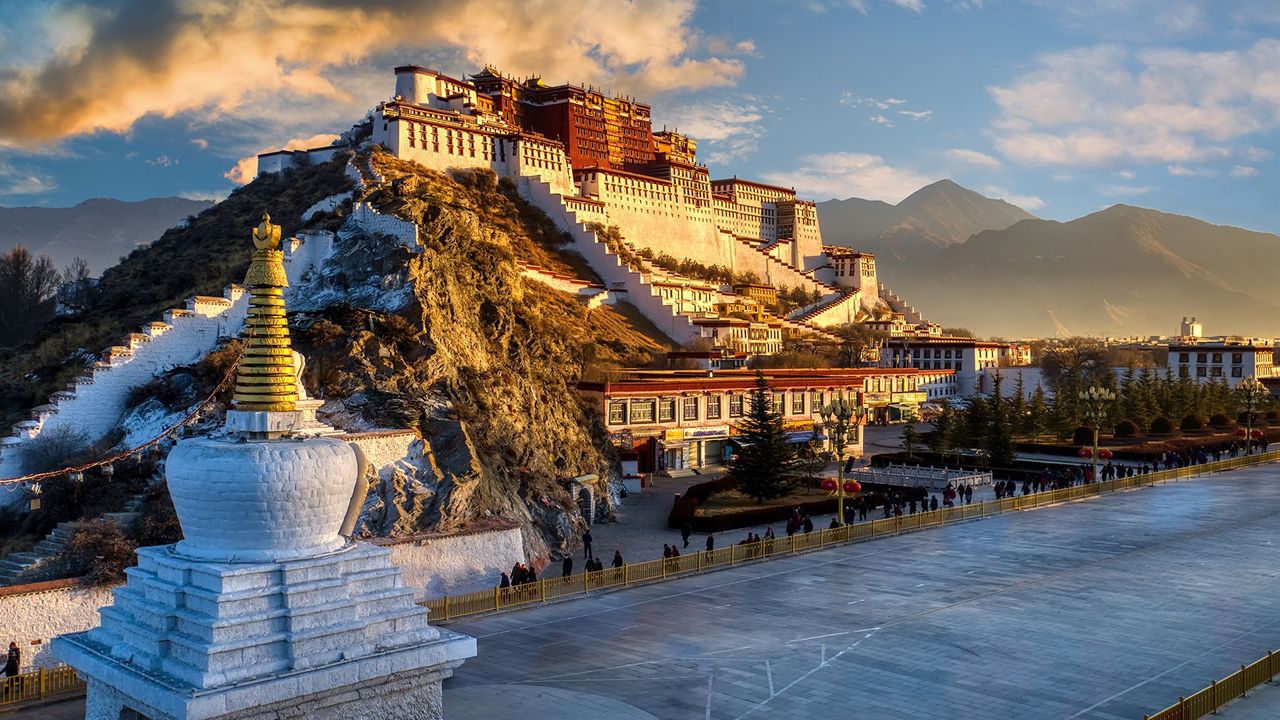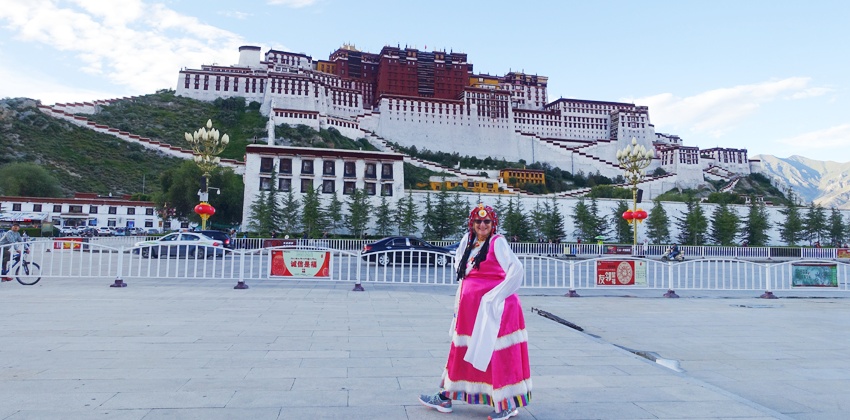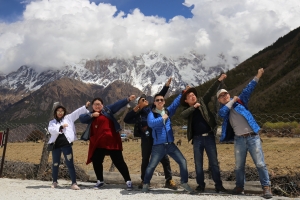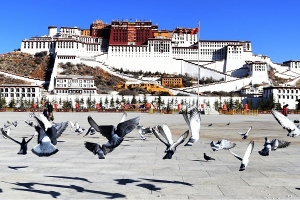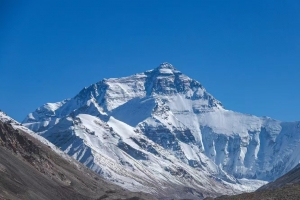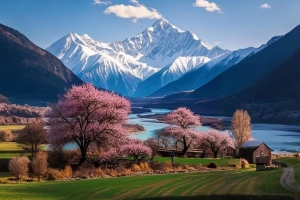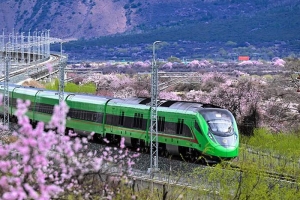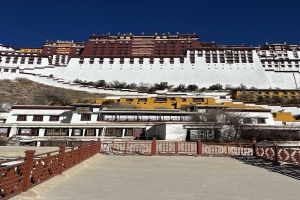High atop the Marpo Ri hill in the heart of Lhasa, Tibet, the Potala Palace stands as a monumental testament to Tibetan history, spirituality, and architecture. This awe-inspiring palace, once the winter residence of the Dalai Lamas, has captured the imagination of travelers, historians, and spiritual seekers for centuries. From the geographical location of the Potala Palace, its unique architectural features to its profound historical heritage and its important significance in Tibetan Buddhism, the Potala Palace has the ability to continue to attract people in the world.
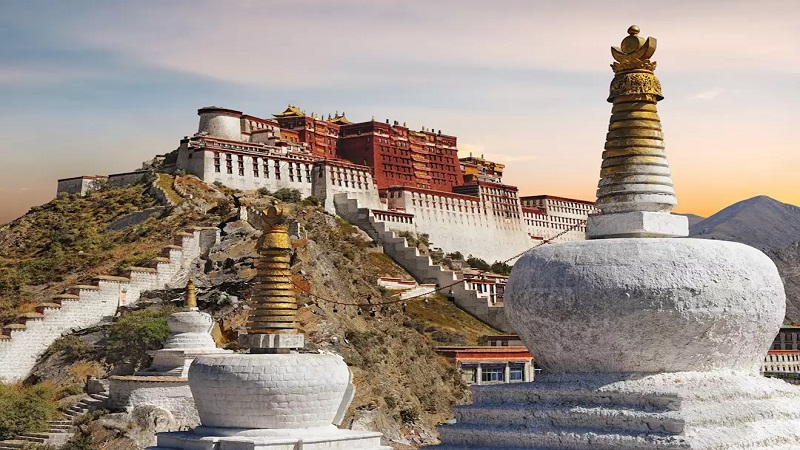
Introduction to the Potala Palace Lhasa
Rising to an altitude of 3,700 meters (12,100 feet), the Potala Palace is not only one of the highest palaces in the world but also one of its most striking. Its imposing presence on the Lhasa skyline and its vivid depiction on Tibetan currency, such as the 50 Yuan bill, have made it a symbol of Tibet’s rich cultural and religious heritage.
This historical edifice first came to prominence in the 7th century when King Songtsen Gampo is believed to have meditated in a nearby sacred cave. Over the ensuing centuries, the site evolved from a spiritual retreat into a regal palace complex. By the 17th century, it had become the winter palace of the Dalai Lamas, and its significance was cemented when it was listed as a UNESCO World Heritage Site along with the nearby Jokhang Temple.
Potala Palace Lhasa’s Location
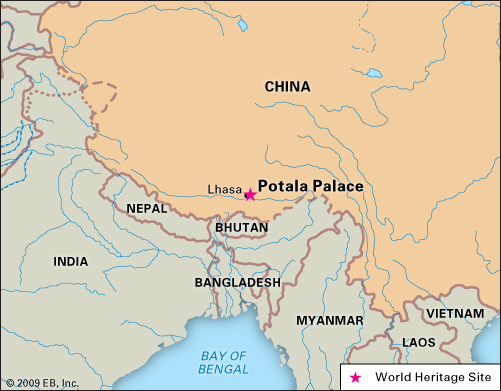
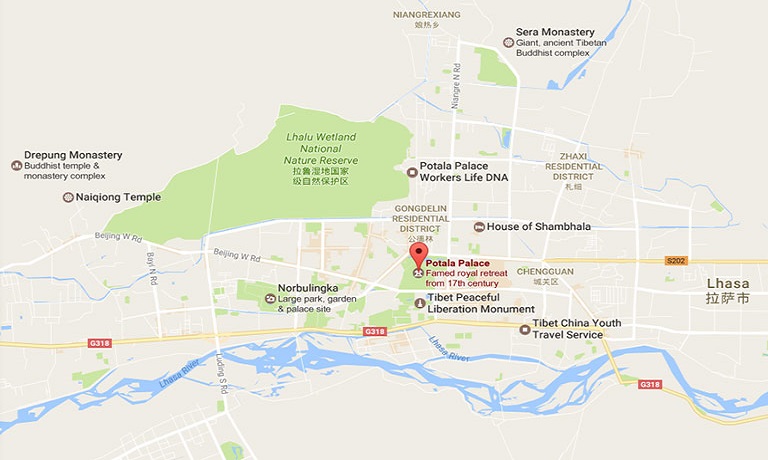
Perched high on the Marpo Ri hill, the Potala Palace overlooks the ancient city of Lhasa, offering panoramic views of both the bustling urban landscape below and the rugged, mountainous terrain that surrounds it. Its elevated position not only provides breathtaking vistas but also carries significant spiritual symbolism. The high altitude, reaching 3,700 meters (12,100 feet) above sea level, has made the palace an enduring beacon of Tibetan culture, visible from nearly every part of Lhasa.
Potala Palace Key Facts
- Highest Palace in the World: The Potala Palace holds the record for being the highest palace in the world, a distinction that adds to its mystique and allure.
- Spiritual Origins: The site’s history is deeply intertwined with Tibetan Buddhism. Legend has it that King Songtsen Gampo meditated in one of the sacred caves on the hill during the 7th century, which laid the foundation for the palace’s future.
- Residence of the Dalai Lamas: Since the 17th century, the palace served as the winter residence of the Dalai Lamas, acting as a center for both religious practice and Tibetan governance.
- UNESCO World Heritage Site: Recognized for its cultural and historical significance, the Potala Palace has been inscribed on the UNESCO World Heritage List, ensuring its preservation for future generations.
The combination of its physical elevation and cultural height makes the Potala Palace an unmatched landmark in the annals of world history and architecture.
Palacio Potala (Potala Palace) Lhasa History
Long before it became a sprawling palace complex, the site on Marpo Ri hill was already imbued with spiritual energy. Ancient legends speak of several sacred caves carved into the hillside, which were once the abode of the Bodhisattva Avalokiteshvara—known locally as Chenresig. It was these very caves that inspired King Songtsen Gampo to seek solitude and meditate in the 7th century. Some historians suggest that the name “Potala” might derive from the Tibetan appellation for the Pure Land of Avalokiteshvara, reinforcing the notion that the area was considered a divine space long before any structures were built.
The Birth of a Palace Complex
The transition from a sacred retreat to a royal palace began with King Songtsen Gampo’s decision to establish a palace on the spiritually potent Marpo Ri hill. Although the original structure was modest compared to the magnificent complex seen today, it laid the groundwork for what would eventually evolve into the Potala Palace.
During the 17th century, the transformation gained momentum when the fifth Dalai Lama chose the Marpo Ri hill as the new seat for his Gelugpa sect, transferring the center of Tibetan Buddhist power from the Drepung Monastery. The Dalai Lama’s decision was both a strategic and spiritual move that would change the destiny of the site forever.
The construction of the modern palace complex can be divided into several key phases:
- The White Palace (Kharpo Podrang): Work on the White Palace began in 1645. This section of the palace served as the living quarters and administrative center of the Dalai Lama. Soon after its construction, the fifth Dalai Lama moved from Drepung Monastery to reside in the White Palace. Over the years, subsequent Dalai Lamas made further modifications, adding new rooms and enhancing the living spaces to suit their needs.
- The Red Palace (Marpo Podrang): Unlike the White Palace, the origins of the Red Palace are less documented. However, it is known that work on this section began during the same era. The Red Palace was intended to house the religious and ceremonial functions of the palace. Notably, the fifth Dalai Lama’s death in 1682 was shrouded in secrecy until the completion of the Red Palace 12 years later, underscoring the symbolic and practical importance of this part of the complex.
Together, the White and Red Palaces form an intricate labyrinth of halls, chapels, and ceremonial spaces, each steeped in centuries of tradition and history.
The Dalai Lama and the Potala Palace
For centuries, the Potala Palace has been intrinsically linked with the spiritual and political life of Tibet. After the fifth Dalai Lama established his residence at the palace, it quickly became the epicenter of Tibetan Buddhism and governance. The palace served multiple roles:
- Royal Residence: As the winter residence of the Dalai Lamas, the Potala Palace was a home, a sanctuary, and a working space for the spiritual leader of Tibetan Buddhism.
- Administrative Center: The palace was also the seat of the Tibetan government, where important decisions concerning the state and religious affairs were made.
- Pilgrimage Site: With its impressive collection of sacred relics, tombs of previous Dalai Lamas, and stunning religious iconography, the palace quickly became a major pilgrimage destination for devout Buddhists.
During the 17th century, when the seventh Dalai Lama established the Summer Palace in Norbulingka Park, the Potala Palace’s role as the winter retreat became even more pronounced. Each Dalai Lama, while spending the summer months in the more temperate environs of Norbulingka, would return to the Potala Palace to continue their governance and spiritual duties during the colder months.
Preservation Through Turbulent Times
One remarkable aspect of the Potala Palace is its survival through periods of great turmoil. During the Cultural Revolution in 1959, many ancient structures in Tibet were damaged or destroyed. However, the Potala Palace emerged relatively unscathed—a fact attributed by some to the protection offered by Chinese troops stationed in the area. As a result, many of its chapels, artifacts, and frescoes remain intact, preserving a tangible link to Tibet’s storied past.
Architectural Marvel of Potala Palace Lhasa
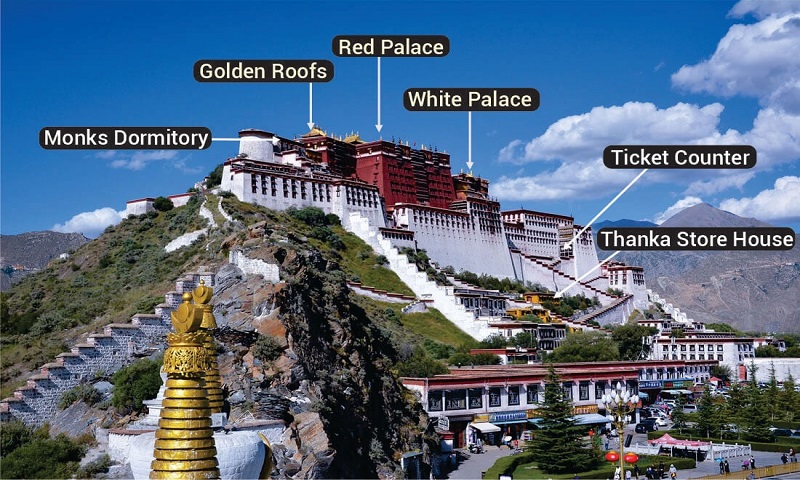
The Potala Palace is renowned not only for its historical importance but also for its unique architectural layout, which is divided into two distinct sections: the White Palace and the Red Palace. Each section served a specific function and was designed to complement the other, both symbolically and functionally.
The White Palace: The Dalai Lama’s Living Quarters
The White Palace, known as Kharpo Podrang, was primarily the personal living space of the Dalai Lama. It is characterized by its more subdued exterior and interior, which contrast with the vibrancy of the Red Palace. Inside, visitors can explore the private quarters where the Dalai Lama once resided, studied, and received close advisors. The palace features several rooms decorated with intricate murals, finely carved wooden details, and sacred Buddhist iconography.
Key areas within the White Palace include:
- The Main Hall: This central chamber was used for official meetings and private audiences. It remains one of the most striking spaces within the palace.
- Religious Chapels: Several small chapels are interspersed throughout the White Palace. Here, the faithful would offer prayers and perform rituals, creating an atmosphere of serene devotion.
- Private Chambers: The personal quarters of the Dalai Lama, complete with furnishings and relics that highlight a life steeped in spiritual practice, are also on display.
The Red Palace: A Sanctuary of Sacred Rituals
In contrast, the Red Palace, or Marpo Podrang, was designed to serve as the religious heart of the complex. With its richly decorated walls, sacred chapels, and ceremonial halls, the Red Palace was the venue for important religious rites and festivals. It houses:
- Tomb Stupas of the Dalai Lamas: These sacred burial mounds are a focal point for pilgrims and serve as a solemn reminder of the spiritual lineage of Tibetan Buddhism.
- Assembly Halls: These grand halls were used for large gatherings, including important ceremonies and public rituals.
- Meditation Caves and Chapels: Hidden within the complex are spaces dedicated to meditation and quiet reflection, offering visitors a glimpse into the deep spiritual traditions that define the palace’s purpose.
- Ornamental Mandalas: Intricate 3-D mandalas constructed with precious stones and metals adorn the halls, symbolizing cosmic order and the unity of all existence.
Symbolism in Stone and Art
Every element of the Potala Palace’s design carries symbolic meaning. The dual structure of white and red not only represents the duality of the palace’s functions—administrative and religious—but also symbolizes the complementary nature of secular and spiritual life in Tibetan culture. The use of color, the arrangement of sacred spaces, and the placement of relics all contribute to a profound narrative that speaks to the heart of Tibetan identity.
Engineering Feats and Challenges
Constructed atop a 130-meter high hill, the palace posed significant engineering challenges that continue to impress architects and historians alike. The very foundation of the structure had to be carefully designed to withstand the forces of nature, including seismic activity and extreme weather conditions. Over centuries, builders and artisans have managed to not only create a stable edifice but also infuse it with artistic details that reflect the highest standards of Tibetan craftsmanship.
The integration of structural design with natural landscapes is a recurring theme in Tibetan architecture, and the Potala Palace exemplifies this approach. The palace harmoniously blends with its surroundings, providing both protection from the elements and a commanding view of Lhasa and the surrounding mountains.
Cultural and Religious Importance of the Potala Palace Lhasa
The Potala Palace has long been the epicenter of Tibetan Buddhism. As the winter residence of the Dalai Lamas, it was the site where religious leaders dedicated their lives to spiritual practice, education, and the administration of both the state and its religious institutions. The palace is replete with sacred relics, ancient manuscripts, and devotional artifacts that illustrate the deep connection between Tibetan governance and Buddhist practice.
Throughout its history, the palace has been a sanctuary where meditation, ritual, and scholarly pursuits intersect. Its chapels and meditation cells provided an environment conducive to introspection and the pursuit of enlightenment. Pilgrims from across Tibet and beyond have journeyed to the Potala Palace not only to witness its architectural splendor but also to participate in the spiritual energy that emanates from its walls.
Every stone of the Potala Palace tells a story—a narrative that spans over a millennium. From the early meditation retreats of King Songtsen Gampo to the establishment of the palace as a center of Buddhist power in the 17th century, the site has witnessed the rise and fall of dynasties, religious reforms, and social transformations. The preservation of artifacts and murals within the palace serves as a chronicle of Tibetan history, offering historians and scholars invaluable insights into the evolution of Tibetan culture and spirituality.
The palace also symbolizes the resilience and continuity of Tibetan traditions. Despite periods of political upheaval and cultural disruption—most notably during the Cultural Revolution—the Potala Palace has survived as a beacon of Tibetan identity and pride. Its enduring legacy is a powerful reminder of the strength and determination of the Tibetan people.
Today, the Potala Palace remains a major pilgrimage destination. Devotees and tourists alike are drawn to the palace’s spiritual aura and the legends that surround it. Pilgrims often circle the palace complex, spinning prayer wheels and chanting mantras as a way to accumulate spiritual merit. This ritual, performed in a clockwise direction around the palace, is an age-old practice believed to bring blessings and peace to the participants.
In addition to individual pilgrimages, the palace is also the site of numerous festivals and religious ceremonies that attract large crowds every year. These events are marked by vibrant processions, traditional music, and elaborate rituals, reflecting the living cultural heritage of Tibet.
Experiencing the Potala Palace Lhasa
Visiting the Potala Palace is an experience that transcends the ordinary. Because the site is one of the most visited landmarks in Tibet, planning ahead is essential to ensure a smooth and fulfilling trip. Due to the high number of tourists, guided tours are often the best way to navigate the complex, as they provide valuable historical context and access to areas that might otherwise be difficult to appreciate fully.
Tip: For those who wish to spend more time exploring the palace, consider visiting during the late fall or winter months. With fewer tourists around, you’ll have the opportunity to enjoy the palace’s beauty in a more relaxed atmosphere and take your time to absorb every detail.
Planning Your Visit
A typical tour of the Potala Palace begins at the East Gate. As you enter, you are greeted by the striking exterior of the palace, set against the backdrop of the Himalayan foothills. Here, your journey into Tibetan history and spirituality truly begins.
- The Approach via Chak Pori Hill:
For the best photographic views, many visitors start their journey by ascending Chak Pori Hill, which provides an unobstructed panorama of the Potala Palace and the surrounding city. From this vantage point, the palace appears almost ethereal, a blend of ancient stone and vibrant religious symbolism that seems to float above Lhasa. - Exploring the White Palace:
Upon entering through the East Gate, visitors first explore the White Palace. Here, you’ll see the private chambers where the Dalai Lama once lived, study areas adorned with intricate murals, and several intimate chapels where personal prayers were once offered. Each room tells a story of devotion, governance, and the personal life of one of Tibet’s most revered spiritual leaders. - The Spiritual Journey in the Red Palace:
After exploring the living quarters, the tour continues to the Red Palace, accessed by climbing a series of steep stairs. The Red Palace is dedicated to religious practice and ceremonial functions. As you move through its hallowed halls, you’ll encounter sacred relics, detailed mandalas constructed from precious stones and metals, and chapels that have hosted centuries of ritual and prayer. Notably, the tomb stupas of former Dalai Lamas are a poignant reminder of the spiritual lineage that has shaped Tibetan Buddhism. - Capturing the Views:
Once you have toured both sections of the palace, the journey culminates with a descent along the west side. From here, the expansive views of Lhasa and the surrounding mountains are a perfect finale to the visit—a moment to reflect on the deep spiritual and historical significance of the site.
Nearby Attractions and Cultural Sites the Potala Palace Lhasa
The area around the Potala Palace is teeming with sites that further illuminate the rich tapestry of Tibetan culture and history. A visit to the palace can easily be combined with trips to several nearby attractions, each adding a unique facet to your journey.
Chak Pori
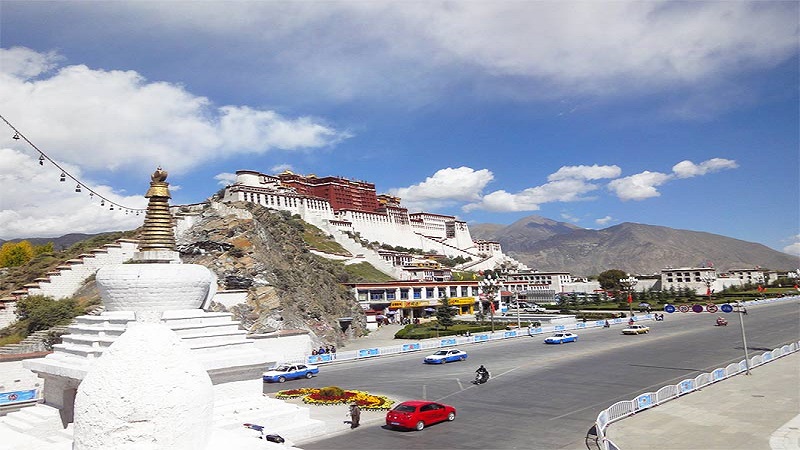
Just a short distance from the palace, Chak Pori offers an unrivaled vantage point for photography and reflection. Here, visitors can capture the Potala Palace in its full splendor, as well as the bustling main gate of Lhasa. This spot is particularly popular with both amateur and professional photographers who wish to immortalize the grandeur of this historic landmark.
The Tranquil Park Surrounding the Palace
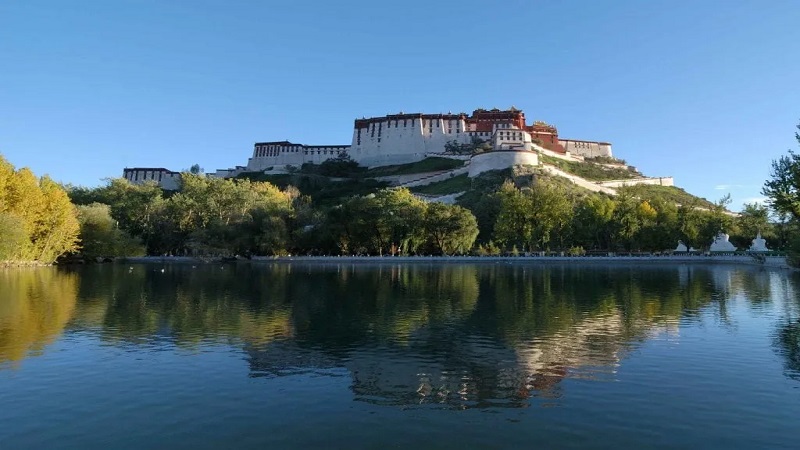
Behind the palace lies a peaceful park that provides a welcome retreat from the busy tourist paths. Featuring a large lake inhabited by a variety of birds, the park is an ideal place to relax and absorb the serenity that pervades the area. In the evenings, the palace is beautifully illuminated, and its reflection in the lake creates a magical scene that epitomizes the union of nature and architecture.
Lugang Temple
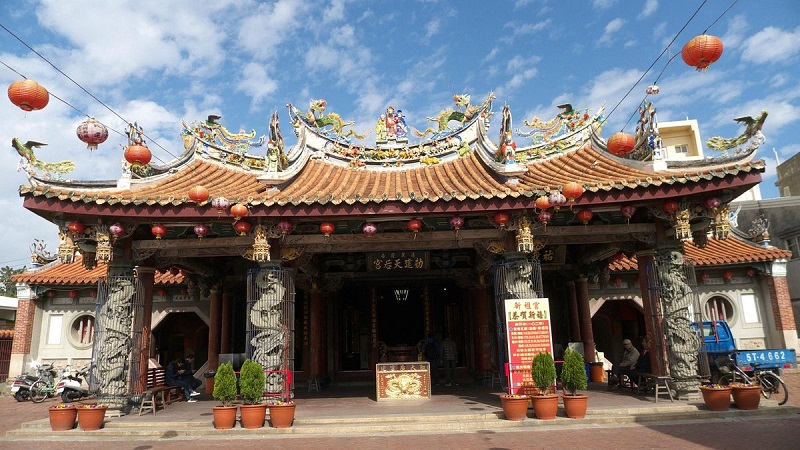
Another site worth exploring is the Lugang Temple, located just beyond a quaint arch bridge near the palace. This small temple, with its captivating wall paintings that tell age-old stories much like modern-day comic books, is a hidden treasure for those interested in the lesser-known aspects of Tibetan heritage. The temple’s tranquil island setting, with its lush greenery and carefully tended grounds, offers a perfect half-hour to one-hour escape into spiritual contemplation.
A Visit to the Nunnery
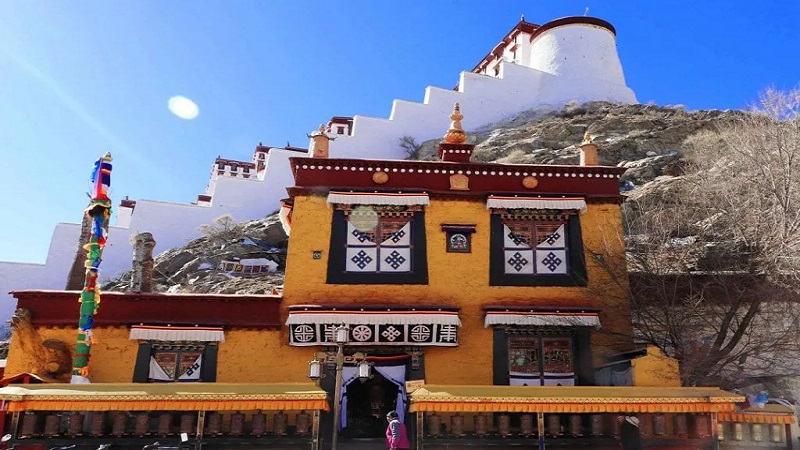
Adjacent to the Potala Palace is a small nunnery—a modest yellow building that exudes peace and simplicity. Although diminutive in size, this sacred space is home to various statues and offers insight into the role of female monastic communities in Tibetan Buddhism. A brief visit here can provide a deeper understanding of the multifaceted spiritual traditions of Tibet.
Local Tea Houses and Culinary Delights
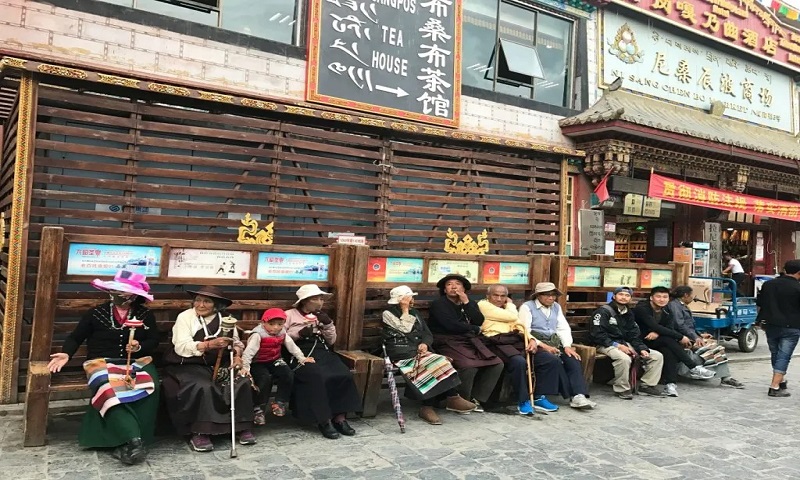
No journey through Tibet is complete without experiencing its unique cuisine and hospitality. Several tea houses in the vicinity of the Potala Palace not only serve traditional Tibetan tea and snacks but also offer spectacular views of the palace itself. For instance, the Sholkunkyi teahouse is a popular choice among visitors. Located conveniently near the viewpoint, it provides an ideal setting to relax and enjoy a meal while soaking in the panoramic vistas of Lhasa and the majestic palace.
The Potala Palace in Modern Context
Despite the challenges posed by time and political change, the Potala Palace remains a living monument—a place where history, religion, and culture converge. Today, it is more than just a tourist attraction; it is a symbol of Tibetan resilience and a repository of its collective memory. Scholars, historians, and spiritual practitioners continue to study its intricate designs and storied past, ensuring that its legacy endures for future generations.
The Role of UNESCO and Preservation Efforts
The designation of the Potala Palace as a UNESCO World Heritage Site has been pivotal in its preservation. This international recognition not only underscores the palace’s global significance but also provides a framework for its conservation. Ongoing restoration projects and protective measures ensure that the historical integrity of the palace is maintained, allowing visitors to experience its wonders much as they were centuries ago.
The Impact of Tourism and Sustainable Practices
As the number of visitors to the Potala Palace continues to grow, local authorities and cultural preservationists are increasingly focused on implementing sustainable tourism practices. Measures such as guided tours, visitor quotas, and enhanced conservation protocols are in place to protect this invaluable cultural asset while ensuring that tourism benefits the local community. These efforts reflect a broader commitment to balancing heritage preservation with modern economic and social needs.
Continuing Spiritual Legacy
For many, the Potala Palace is not merely an ancient structure but a continuing source of spiritual inspiration. Pilgrims come from far and wide to pay homage, participate in religious ceremonies, and experience firsthand the deep spiritual traditions that have been nurtured within its walls. Whether through silent prayer or vibrant festival, the energy of the palace continues to resonate with all who visit.
Why the Potala Palace Is So Important
Many people ask why the Potala Palace is so important. It is just a palace, and it is located in a remote location and at a high altitude.
A Symbol of Tibetan Identity
The Potala Palace embodies the spirit and identity of the Tibetan people. It is a physical manifestation of the region’s storied past, a reminder of the profound contributions of Tibetan Buddhism, and a testament to the artistic and engineering prowess of its builders. More than just a building, the palace is an enduring symbol of national pride and cultural continuity.
A Beacon for World Heritage
As a UNESCO World Heritage Site, the Potala Palace is recognized as a treasure of global importance. Its preservation is a responsibility shared by people around the world, as it represents not only Tibetan culture but also humanity’s collective heritage. The palace stands as a reminder that history, art, and spirituality are intertwined, transcending borders and uniting diverse communities.
An Educational Resource
For historians, architects, and scholars of religion, the Potala Palace offers an unparalleled window into the evolution of Tibetan society. Its walls speak of ancient rituals, the intellectual pursuits of Buddhist scholars, and the complex interplay between political power and spiritual leadership. Every visit to the palace is a journey through time—a chance to witness how art and architecture can reflect the deepest aspirations of a civilization.
Inspiring Future Generations
Perhaps most importantly, the Potala Palace continues to inspire millions around the world. Its majestic silhouette against the vast Tibetan sky encourages new generations to explore their cultural roots, engage with history, and strive for excellence in preserving the legacy of human achievement. In this way, the palace remains not just a relic of the past but a living inspiration for the future.
Explore the Potala Palace in Lhasa with journey2tibet
The Potala Palace, located in the Tibet Autonomous Region of China, is much more than an architectural wonder—it is a vibrant symbol of Tibetan history, a spiritual sanctuary, and an enduring testament to the cultural resilience of its people. Its story, etched into every stone and mural, continues to captivate and inspire, drawing visitors from all corners of the globe to witness a living legacy of one of the world’s most remarkable civilizations.
By combining centuries of history with a dynamic present, the Potala Palace remains a beacon of Tibetan identity and a must-visit destination for those who wish to experience the rich tapestry of culture, spirituality, and art that defines Tibet.
Whether you are planning a detailed exploration or a brief visit, understanding the depth and significance of the Potala Palace enriches every moment spent in its presence. With its soaring heights, breathtaking views, and deep historical roots, the Potala Palace stands as a timeless reminder of the beauty and resilience inherent in Tibetan culture—a true jewel of the Himalayan world.

